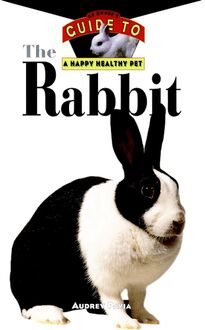-
 Univers
Univers
-
 Ebooks
Ebooks
-
 Livres audio
Livres audio
-
 Presse
Presse
-
 Podcasts
Podcasts
-
 BD
BD
-
 Documents
Documents
-
- Cours
- Révisions
- Ressources pédagogiques
- Sciences de l’éducation
- Manuels scolaires
- Langues
- Travaux de classe
- Annales de BEP
- Etudes supérieures
- Maternelle et primaire
- Fiches de lecture
- Orientation scolaire
- Méthodologie
- Corrigés de devoir
- Annales d’examens et concours
- Annales du bac
- Annales du brevet
- Rapports de stage
La lecture à portée de main
Vous pourrez modifier la taille du texte de cet ouvrage
Découvre YouScribe en t'inscrivant gratuitement
Je m'inscrisDécouvre YouScribe en t'inscrivant gratuitement
Je m'inscrisEn savoir plus
Vous pourrez modifier la taille du texte de cet ouvrage
En savoir plus

Description
The Longhaired Cat: An Owner's Guide to a Happy Healthy Pet includes a description and beautiful color photo of each longhaired breed, information on how and where to choose your cat, sound advice on how to keep your cat healthy, insight into your cat's behavior, and much more.
The Longhaired Cat: An Owner's Guide to a Happy Healthy Pet is full of easy-to-reference sidebars on everything from what to put in your cat's first aid kit to old-world legends about cat history. Whether you're a new cat owner with questions about bringing home your new pet, or a long-time cat lover facing new feline dilemmas, this book will provide you with the answers you need.
PART ONE: Welcome to the World of the Longhaired Cat.
1. History of the Cat.
2. The Longhaired Breeds.
3. Choosing the Longhaired Cat for You.
4. Your Individual Cat.
PART TWO: Living with Your Longhaired Cat.
5. Your Cat and Your Home.
6. Feeding Your Cat.
7. Grooming Your Longhaired Cat.
8. Your Cat's Health.
PART THREE: Enjoying Your Cat.
9. Feline Behavior and Training.
10. Things You Can Do with Your Cat.
PART FOUR: Beyond the Basics.
11. Recommended Reading.
12. Resources.
Sujets
Informations
| Publié par | Turner Publishing Company |
| Date de parution | 05 mai 2008 |
| Nombre de lectures | 0 |
| EAN13 | 9780470366882 |
| Langue | English |
| Poids de l'ouvrage | 3 Mo |
Informations légales : prix de location à la page 0,0900€. Cette information est donnée uniquement à titre indicatif conformément à la législation en vigueur.
Extrait
The Longhaired Cat
Howell Book House
Howell Book House
A Simon Schuster Macmillan Company
1633 Broadway
New York. NY 10019
Copyright 1996, by Howell Book House
All rights reserved. No part of this book may be reproduced or transmitted in any form or by any means, electronic or mechanical, including photocopying, recording, or by any information storage and retrieval system, without permission in writing from the Publisher.
MACMILLAN is a registered trademark of Macmillan. Inc.
Library of Congress Cataloging-in-Publication Data
Sadler, Anna.
The longhaired cat: an owner s guide to a happy, healthy pet by
Anna Sadler,
p. cm.
Includes bibliographical references.
ISBN 0-87605-476-9 (hardcover)
1. Longhair cats. 1. Title.
SF449.L65S34 1996
636.8 3-dc20 96-3951
CIP
Manufactured in the United States of America
10 9 8 7 6 5 4 3 2
Series Director: Dominique DeVito
Series Assistant Directors: Ariel Cannon and Sarah Storey
Book Design: Michele Laseau
Cover Design: Iris jeromnimon
Illustration: Jeff Yesh
Photography:
Cover Photos by Scott McKiernan/Zuma anti Mary Bloom
Joan Balzaraini: 48
Mary Bloom: 38 , 40 , 72
Paulette Braun/Pets by Paulette: 10 , 53 , 85 , 89
Paul Butler: 15 , 18 , 20 , 34 , 59 , 121 , 126 , 133
Chanan: 16 , 17 , 18 , 19 , 21 , 22 , 25 , 26 , 27 , 29 , 31 , 32 , 33 , 35 , 36
Scott McKiernan/Zuma: 8
Ren e Stockdale: 12 , 37 , 42 , 43 , 58 , 60 , 67 , 70 , 73 , 74 , 75 , 79 , 80 , 81 , 82 , 86 , 92 , 94 , 95 , 98 , 99 , 101 , 103 , 110 , 112 , 113 , 117 , 118 , 129 , 130 , 136 , 137 , 142 , 146
Judith Strom: 5 , 61
Jean Wentworth: 7 , 11 , 14 , 43 , 44 , 46 , 47 , 51 , 54 , 63 , 65 , 84 , 91 , 107 , 120 , 128 , 135 , 138
Karrin Winter/Dale Churchill: 52 , 77 , 140
Production Team: Trudy Brown. Jama Carter, Kathleen Caulfield,
Trudy Coler, Amy DeAngelis, Matt Hannafin, Vic Peterson,
Terri Sheehan and Marvin Van Tiem.
Contents
part one
Welcome to the World of the Longhaired Cat
1 History of the Cat
2 The Longhaired Breeds
3 Choosing the Longhaired Cat for You
4 Your Individual Cat
part two
Living with Your Longhaired Cat
5 Your Cat and Your Home
6 Feeding Your Cat
7 Grooming Your Longhaired Cat
8 Your Cat s Health
part three
Enjoying Your Cat
9 Feline Behavior and Training
10 Things You Can Do with Your Cat
part four
Beyond the Basics
11 Recommended Reading
12 Resources
part one
External Features of the Longhaired Cat
chapter 1
History of the Cat
While evidence of the dog s domestication can be gleaned from anthropological evidence found among the earliest hunter-gatherer cultures some 10,000 to 12,000 years ago, the earliest documented evidence of the cat s interaction with man is not found until about 2000 B.C . in Egypt. Paintings and inscriptions show that cats lived in the homes of Egyptians, and that they were revered, protected and interred in tombs and cemeteries. They were even deified in the cult of the goddess Bast, or Pasht, depicted as a woman with a cat s head. Once the cat s cultural importance was established in Egypt, the domesticated cat made its way to the Middle East, India, China and finally to Rome.
Rome was the cat s gateway into all of Europe. Prized for their mousing abilities, cats were brought all the way to Scotland and Ireland. Early seafaring explorers carried them on their ships to other parts of the world. While conventional wisdom claims that there were no New World domesticated cats until they sailed with the explorers, some evidence exists in Peruvian art from 1500 B.C . that a smaller, domestic-type cat might have existed there.
CATS VS. RATS: HOW THE WAR BEGAN
A Madagascan legend tells of how the enmity between cats and rats began. The two once lived in peace, so the story goes, until a famine came over the land and they set out together to find a better life. On their journey, they encountered a river too wide to swim. Together they unearthed o huge yam, and the rat hollowed it out with his teeth to form a canoe. They set off into the river, with the cat paddling. To the cat s dismay, however, the canoe was soon sinking; the rat, due to his ravenous hunger, had begun to eat the edges of the yam, endangering both their lives. Weak and sinking, the rat begged the cat for help. I will only help you, replied the cat, if you will allow me to eat you when we reach land. The rat consented, but began planning his escape. When they reached the shore, the rat said, You must wait to eat me until I am dry, for while I am soggy I will not be good to eat. The cat consented, and the rat used the delay to dig under some tree roots and hide. The cat, hating to be duped, then declared eternal war on all rats; the war continues to this day.
Most scholars agree that the origin of today s domestic cat is the African Wild Cat, the Felis silvestris libyca. A small, buff-colored cat with darker stripes, it is found throughout Africa and Asia. The evolution of longer coats on cats may have begun when domestic cats mated with the Pallas Cat (Felis manul), a species found in the Caspian sea area and in the steppes of Northern and Central Asia.
Some current cat breeds are now recognized as having longhair variants that began as genetic mutations. The proliferation of these mutations, in combination with the forces of natural selection, created cats in colder climes whose longer, denser coats enabled them to better survive the winter weather.
For centuries the terms Persian and Angora were virtually interchangeable throughout Europe and America, and the longhaired cat these terms described has been prized for its beauty from the earliest times. Other longhaired breeds developed within colder geographic regions, probably as descendants of the cats who traveled with early Norse explorers. These History new breeds included the Siberian Cat in Russia, the Norwegian Forest Cat in Norway and the Maine Coon Cat in the United States.
One of the oldest longhaired breeds, the Persian has long been prized for its beauty.
Whatever their exact origins, cats have been admired through the centuries for their beauty, grace and independent spirit. They have been valued, from the year 2000 B.C . to today, for their highly efficient predatory instincts. Wherever man has been plagued by rodents, the cat has proved its worth: In the granaries of ancient Egypt, cats could literally mean the difference between plenty and famine; ancient mariners appreciated cats keeping their vessels free of rodents; in the Middle Ages in Europe, cats singlehandedly turned the tide of the rodent-borne bubonic plague; modern ranchers keep barn cats to protect their livestock. In fact, after Hurricane Andrew wiped out entire colonies of feral cats in Florida, a burgeoning population of rats and mice necessitated the introduction of new feral cats to Miami a year later. To date, no one has invented a better mousetrap!
A CAT BY ANY OTHER NAME
In English it s cat; in French, chat. The Germans call them Katzen, the Spanish and Syrians gatos and the Arabs qitt. The ancient Byzantine word was katos, the Latin catus. All ore from kadiz, which was the word for cat in Nubia, an ancient Nile Valley kingdom that included southern Egypt.
Pest Control Through the Ages
Europe was relatively slower than Egypt and Asian countries to recognize the advantages of the domestic cat. Ancient Greece had several small carnivorous animals (the weasel, ermine and stone marten) that controlled rodents that assaulted its granaries; however, these same carnivores were indiscriminate enough to kill chickens, pigeons and even goats. Documentation of when the introduction of cats occurred is sparse; Egypt s prohibition against allowing the Greeks to export cats from Egypt forced the Greeks to carry out clandestine raids to steal them.
Cats, however domesticated these days, still have the mousing skills for which they were first revered.
Plagues are documented from as early as 1070 B.C ., when an epidemic broke out. This epidemic, which the Bible called the plague of the Philistines, killed more than 50,000 people. The Black Death of the mid-1300s claimed twenty-five million lives in Europe and another twenty-three million in Asia, wiping out entire cities and armies. France, South America and India also had massive plagues, all borne by rats. Sooner or later, where there were rats, people came to appreciate cats.
Because of their ratting abilities, cats have literally been the saviour of many civilizations. In France during the eleventh century, cats were so valued that they 8 were listed in wills. In the mid-tenth century, the legal code of Wales included a law fixing the value of a ratting cat, and also penalties and fines for those who endangered its life, wounded it, or did not care for it properly. The cat s price varied according to whether its ratting abilities had been proven. Upon killing its first mouse, a cat s value doubled. Some were valued on par with a fourteen-day-old foal, a calf of six, months, or a completely weaned pig.
THE FIRST CAT
There are a number of different legends that explain how cats made their entrance into the world. According to Hebrew folklore, Noah was concerned that rats might be a problem on the ark by eating all the provisions, and prayed to God for help. God responded by causing the lion, who was sleeping, to unleash a giant sneeze from which emerged a little cat.
In an Arabic legend, Noah s sons and daughters are worried about their safety on the ark because of the presence of the lion. Noah prayed to God for help and God afflicted the lion with a fever. But not too much later another dangerous creature emerged: the mouse. Again Noah prayed and this time God caused the lion to sneeze and the cat issued forth.
In a medieval legend the Devil plays a role in the creation of the cat. Trying to copy God and create a man, the Devil manages only to produce a small, pathetic, skinless animal-the cat. St
-
 Univers
Univers
-
 Ebooks
Ebooks
-
 Livres audio
Livres audio
-
 Presse
Presse
-
 Podcasts
Podcasts
-
 BD
BD
-
 Documents
Documents
-
Jeunesse
-
Littérature
-
Ressources professionnelles
-
Santé et bien-être
-
Savoirs
-
Education
-
Loisirs et hobbies
-
Art, musique et cinéma
-
Actualité et débat de société
-
Jeunesse
-
Littérature
-
Ressources professionnelles
-
Santé et bien-être
-
Savoirs
-
Education
-
Loisirs et hobbies
-
Art, musique et cinéma
-
Actualité et débat de société
-
Actualités
-
Lifestyle
-
Presse jeunesse
-
Presse professionnelle
-
Pratique
-
Presse sportive
-
Presse internationale
-
Culture & Médias
-
Action et Aventures
-
Science-fiction et Fantasy
-
Société
-
Jeunesse
-
Littérature
-
Ressources professionnelles
-
Santé et bien-être
-
Savoirs
-
Education
-
Loisirs et hobbies
-
Art, musique et cinéma
-
Actualité et débat de société
- Cours
- Révisions
- Ressources pédagogiques
- Sciences de l’éducation
- Manuels scolaires
- Langues
- Travaux de classe
- Annales de BEP
- Etudes supérieures
- Maternelle et primaire
- Fiches de lecture
- Orientation scolaire
- Méthodologie
- Corrigés de devoir
- Annales d’examens et concours
- Annales du bac
- Annales du brevet
- Rapports de stage




















